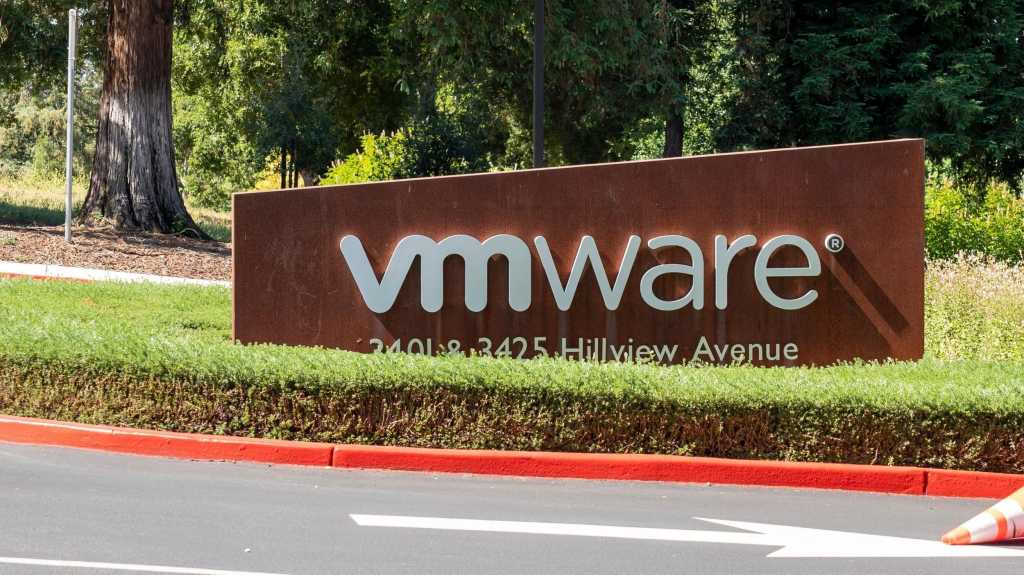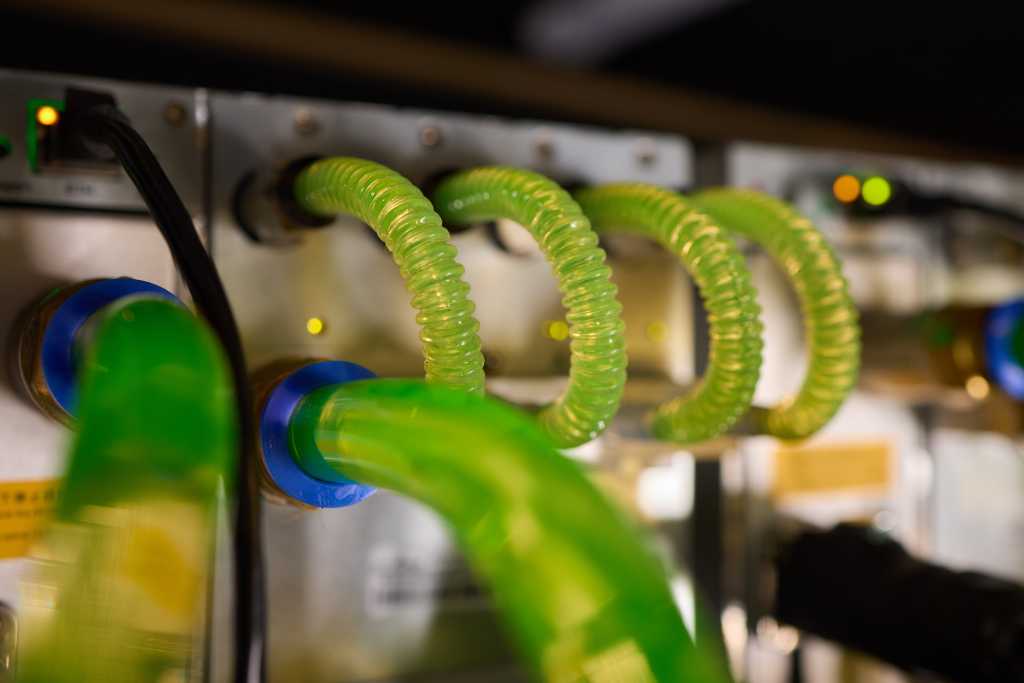In this week’s Charging Forward, Zenobe starts construction on a 400 MW battery energy storage (BESS) project in Scotland, Drax is set to acquire Harmony Energy’s project portfolio and SSE and Gilkes Energy submit plans for Fearna pumped storage hydro.
This week’s headlines:
- Zenobe starts construction on 400 MW Eccles BESS in Scotland
- SSE reaches milestone at 320 MW Monk Fryston BESS
- Drax to acquire Harmony Energy Income Trust (HEIT)
- SSE and Gilkes Energy submit Fearna pumped storage hydro plans
- Long duration storage cap-and-floor design unveiled
- BayWa r.e. submits plans for Scottish BESS
- Trinasolar progresses Essex solar-BESS project
- Root-Power gets nod for 100 MW Lincolnshire BESS
- Downing secures consent for two BESS projects
- Gresham House secures consent for Gretna Green BESS
- Pulse Clean Energy activates 42 MW West Manchester BESS
- Polaron wins £1m Manchester Prize for battery design tech
- International news: Renewco Power to partner on 2.2 GW BESS pipeline in Spain, German crystal sulphur battery startup closes €15m investment round
Zenobe starts work on 400 MW Eccles BESS
Battery storage developer Zenobe has started construction on a 400 MW/800 MWh BESS project near the village of Eccles in the Scottish Borders.
It brings Zenobe’s live and contracted portfolio of projects in Scotland to 1.05 GW, a twentyfold increase since the company announced its first 50 MW project in East Ayrshire in 2022.
Zenobe raised £220m in debt financing for the Eccles project, which is set to go live in 2027.
The Eccles site will feature Tesla’s Megapack 2 XL battery system, becoming the first project in the UK to feature the grid-forming technology.
 © Supplied by Zenobe
© Supplied by ZenobeUnder a contract with the National Energy System Operator (NESO), Zenobe’s Eccles BESS will provide stability services to the UK grid.
The company estimates the Eccles BESS will save British consumers £309m over 15 years once the site is operational by ensuring wind and solar power is not wasted.
Zenobe global director of network infrastructure Smith Oztreves said: “Having just announced that we’ve gone live at Blackhillock, and with our 300 MW/600 MWh Kilmarnock South battery on track to go live in 2026, achieving financial close on Eccles demonstrates the pace at which Zenobe is working to deliver the government’s Clean Power 2030 mission.
“Zenobe is working to prevent not only unnecessary cost from the waste of renewable power but also to enhance the UK’s energy security by increasing the use of homegrown power in these uncertain political times.”
SSE reaches milestone at Monk Fryston BESS
SSE has reached a significant construction milestone at its largest battery project with the arrival of battery units at its Monk Fryston BESS in Yorkshire.
The 320 MW/640 MWh BESS project is six times larger than SSE Renewable’s operational 50 MW battery in Salisbury.
Morrison Energy Services will oversee the installation of the Sungrow PowerTitan BESS units at the Monk Fryston site.
When fully operational, SSE said Monk Fryston will be capable of powering over half a million UK homes for up to two hours at a time during peak demand periods.
SSE Renewables director of onshore wind, solar and battery Heather Donald said the company has reached a “significant milestone” at Monk Fryston.
“Working with our principal contractor and supply partners, we are making great progress on the delivery of one of the largest projects of its kind in the UK,” Donald said.
“Battery storage projects such as Monk Fryston provide much needed flexibility to the grid during times of peak demand and will play an important role in the UK’s homegrown green energy system in years to come.”
Drax to acquire Harmony Energy Income Trust
UK power generation firm Drax Group has agreed a £200m deal to purchase battery storage investor Harmony Energy Income Trust (HEIT).
Since launching in November 2021, HEIT has developed a fully operational portfolio of eight UK BESS projects totalling 395.4 MW/790.8 MWh.
The proposed cash acquisition represents an 11% premium to the closing price of HEIT shares on 24 March, the day prior to the announcement.
Drax called the HEIT acquisition a “highly attractive opportunity” which is complementary to its wider flexible generation (FlexGen) portfolio.
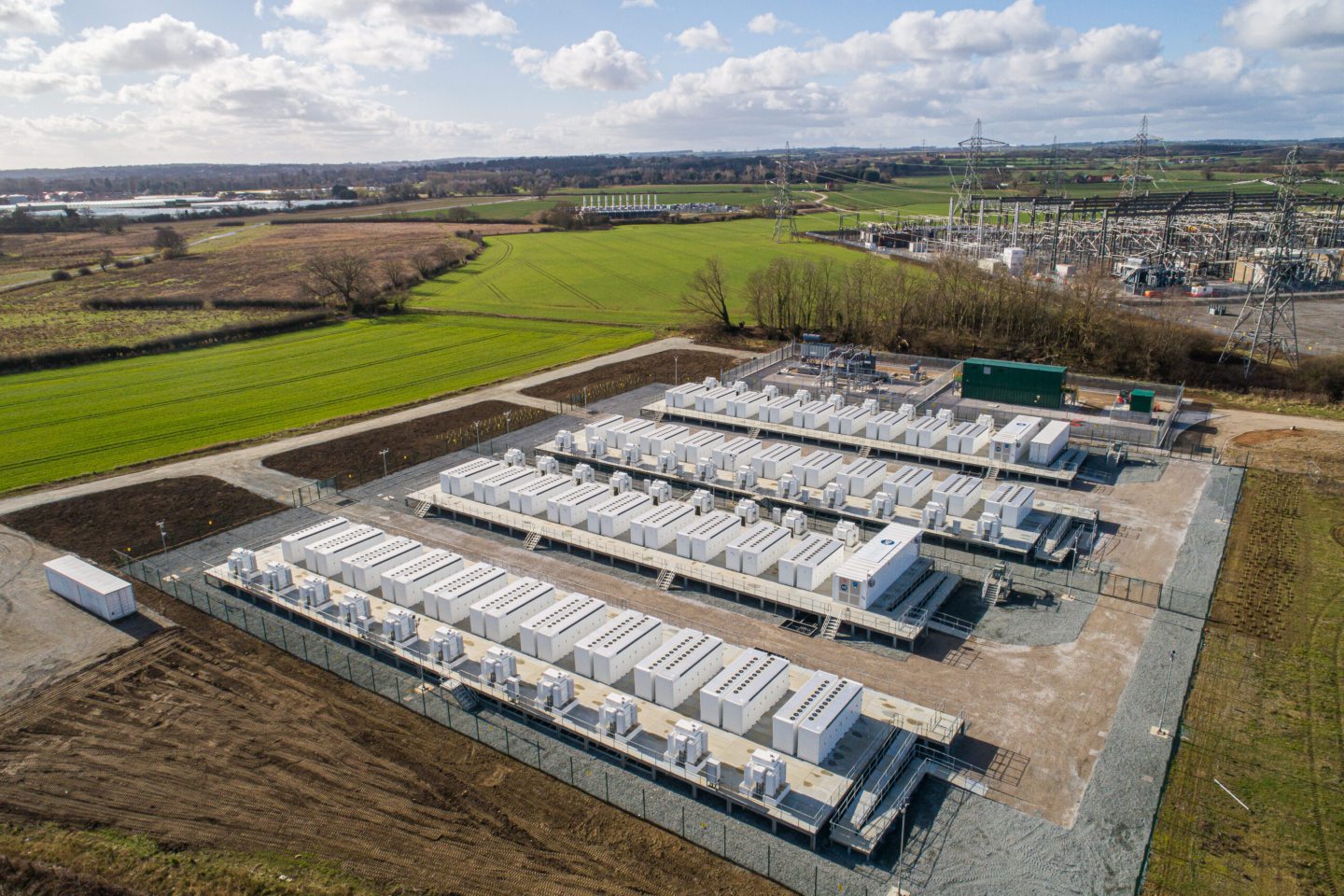 © Supplied by Harmony Energy
© Supplied by Harmony EnergyThe deal is conditional on receiving approval from a majority of HEIT shareholders, Drax said.
Drax chief executive Will Gardiner said adding battery storage to the company’s FlexGen portfolio will enable it to provide “even more secure power to the country when it is needed”.
“In combination with our long duration storage, flexible generation, demand side response capabilities and renewable generation from biomass, we will be able to supply 4.5 GW of dispatchable generation to meet demand,” Gardiner said.
“As more intermittent renewable energy connects to the country’s network, more dispatchable and reliable generation will be required to help keep the lights on when the wind isn’t blowing or the sun isn’t shining.”
Fearna pumped storage hydro plans
SSE and Gilkes Energy have submitted a consent application to the Scottish government for the Fearna pumped storage hydro (PSH) project in the Highlands.
The joint venture project is located on the western end of Glengarry, 25km west of Invergarry.
The Fearna PSH project also adjoins SSE Renewable’s existing Loch Quoich reservoir in the Great Glen hydro scheme.
 © Supplied by SSE
© Supplied by SSESSE said Fearna has a proposed installed capacity of 1.8 GW with stored capacity of up to 36 GWh, providing 20 hours of storage.
That capacity will make Fearna the largest such scheme in the UK if delivered, SSE added.
The project could support around 500 jobs at peak over its seven-year construction period.
The plans involve the development of tunnels and a new power station connecting the existing Loch Quoich reservoir with an upper reservoir at Loch Fearna.
Long duration cap-and-floor design unveiled
The UK government has unveiled key details of its long duration energy storage (LDES) cap-and-floor mechanism, including eligibility criteria and required capacity.
The cap-and-floor mechanism will provide revenue support to LDES projects including pumped storage hydro, liquid air energy storage and flow batteries.
Ofgem and the Department for Energy Security and Net Zero (DESNZ) confirmed the first application window will open as early as April 2025.
The first phase of the cap-and-floor will aim to achieve a capacity range between 2.7 GW and 7.7 GW by 2035.
The scheme has also set a minimum storage duration of eight hours, with cap and floor levels set to only be finalised when projects are built.
Aurora Energy Research senior research associate William Stephenson said the release of the technical decision document on the LDES cap-and-floor “clearly demonstrates the intention to move quickly toward meeting Clean Power 2030 targets”.
 © Alamy Stock Photo
© Alamy Stock Photo“”It is notable that while a 10-hour storage duration was considered, concerns regarding the feasibility of meeting Clean Power 2030 targets led to the decision to set the minimum at 8 hours,” Stephenson said.
“Developers will be able to choose between administratively set floors or a competitive debt-raising process, while a ‘soft’ cap will allow extra revenue to be shared between developers and consumers, balancing incentives.
“Cap and floor levels will not be finalised until projects are built, raising questions about revenue certainty and the overall attractiveness of the scheme.”
Trade body RenewableUK welcomed the government announcement, saying it will “unlock investment” in LDES projects.
RenewableUK senior policy analyst Yonna Vitanova said the cap-and-floor mechanism is a “critical means” of securing investment in an “underdeveloped area”.
“No new LDES technology has reached commercial deployment in the UK in the last 40 years, so today’s confirmation of the design of the cap and floor scheme brings welcome clarity to industry and investors alike,” Vitanova said.
BayWa submits plans for Scottish BESS
Renewable energy developer BayWa r.e. has submitted a consent application for a 500 MW BESS project in South Lanarkshire.
The Glasgow-based subsidiary of German firm BayWa AG is developing the project in partnership with Douglas and Angus Estates.
Located 3km south of the town of Douglas, the Redshaw BESS is adjacent to the ScottishPower Redshaw substation.
BayWa r.e. UK head of development, strategy and origination Gemma Hamilton said submitting plans for the Redshaw BESS is a “big step forward” for the project.
“By locating large-scale storage systems in strategic locations, ensuring optionality around future technology, and developing strong local partnerships, we are creating an energy solution that will make a significant contribution to the drive towards net zero,” Hamilton said.
“This initiative highlights our commitment to investing purposefully in essential technologies that support a cleaner, more sustainable future.”
Root-Power Lincolnshire BESS approved
Battery storage developer Root-Power has secured planning consent for a 100 MW/200 MWh BESS in Sleaford, Lincolnshire.
Once operational, the Little Hale BESS site will be able to power 200,000 UK homes for a period of two hours.
The project is located close to the Bicker Fen grid supply point, with an existing onshore wind farm and a large solar development nearby.
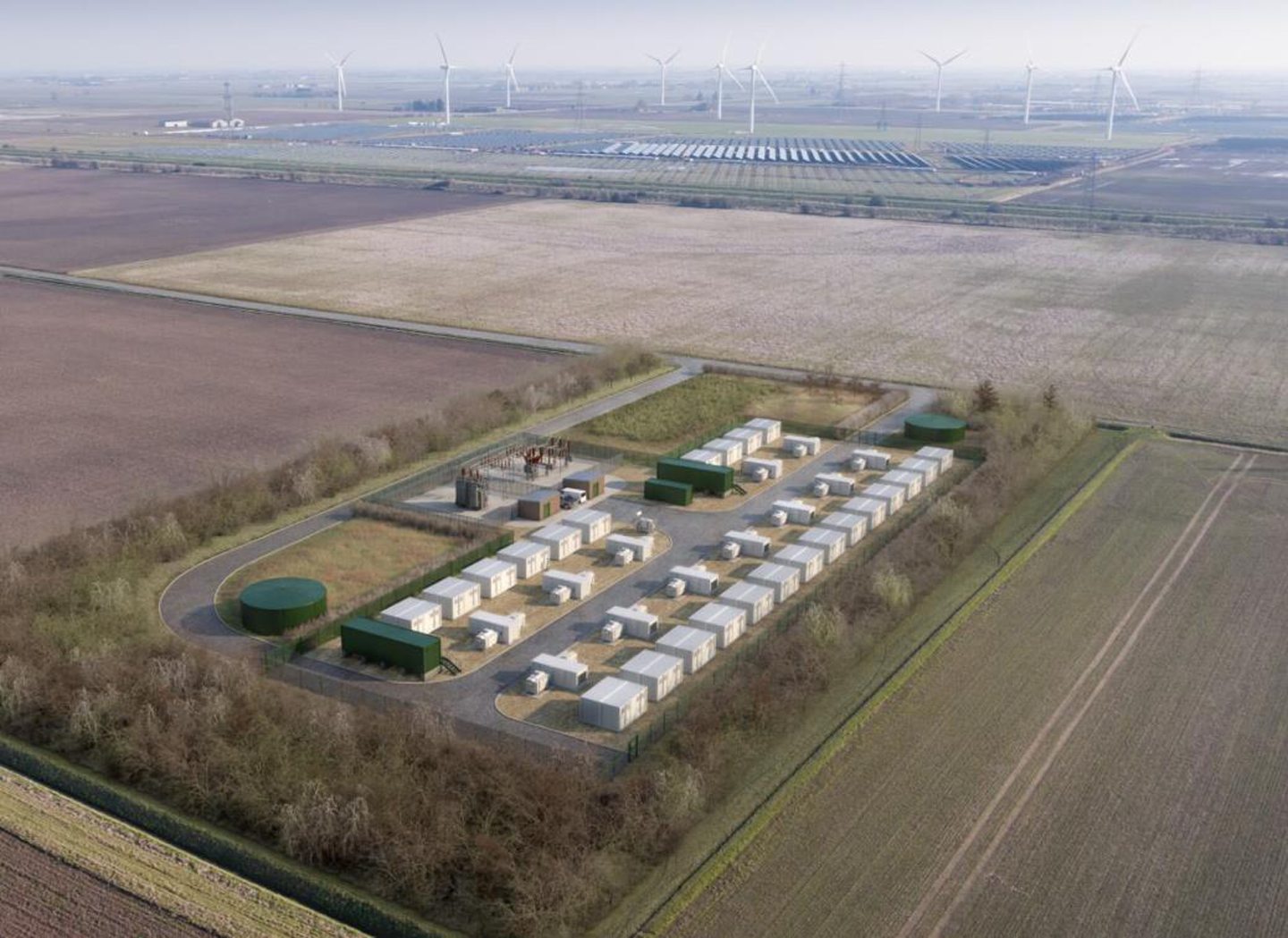 © Supplied by Root-Power
© Supplied by Root-PowerThe approval of the Little Hale project marks the fifth BESS site approval for Root-Power in the last three months, the company said.
Root-Power managing director Neil Brooks said the company secured approval for the Little Hale project in under five months.
“We are looking forward to an exciting few months ahead, with our flagship project due to go live shortly, three projects going through detailed design, and planning decisions being received on a weekly basis,” Brooks said.
Downing secures consent for two BESS sites
Downing Renewable Developments has secured planning consent for two UK BESS projects with a combined 140 MW/280 MWh capacity.
Downing secured approval for both its 40 MW BESS project in Heanor, Derbyshire, as well as an additional 100 MW BESS in Rowley Regis in the West Midlands.
The Rowley Regis project – known as the Edwin Richards Energy Storage Park – will store enough energy to power up to 300,000 homes for a two-hour period.
Meanwhile the Heanor Energy Park will store enough renewable energy to power up to 120,000 homes for a two-hour period.
Downing Renewable Developments head Tony Gannon said securing the two planning consents is a “significant milestone” for the company.
“Equally importantly, both projects received no objections from the public, showing the importance of how our team engage with local communities,” Gannon said.
“Both projects show our commitment to the Midlands, and will make a contribution to the UK’s net zero goals.”
Gresham House’s Gretna Green BESS approved
Scottish ministers have approved plans by battery storage investor Gresham House to develop a 456 MW BESS project in Gretna Green.
Planning documents show Dumfries and Galloway Council raised no objections to the proposal, which will be locate south of the Gretna 400 kV substation.
The plans will see two BESS hubs, one 56 MW and one 400 MW, split across 13 hectares of land near the border between Scotland and England.
According to documents published by Scotland’s Energy Consents Unit, no objections to the project were received from members of the public.
Pulse Clean Energy activates Manchester BESS
UK battery storage developer Pulse Clean Energy has activated its 42 MW/100 MWh BESS project in Hyde in Greater Manchester.
The Hyde BESS is the sixth project Pulse has energised since 2023.
Pulse estimates the Hyde BESS will prevent approximately 3,500 tonnes of CO2 emissions annually, the equivalent of taking 1,000 diesel cars off the road each year.
The facility will be capable of powering over 227,000 UK homes for two hours.
Pulse Clean Energy chief executive Trevor Wills said Hyde BESS will provide benefits to households and businesses across Manchester.
“At a time when the nation is grappling with rising energy costs, while striving to meet ambitious renewable energy targets, battery storage has never been more important,” Wills said.
“By managing the intermittency of renewable sources to ensure a reliable supply of power, our Hyde BESS is playing a key role in the UK’s transition to a cleaner, more affordable, and more secure energy future.”
Polaron wins £1m Manchester Prize
AI technology startup Polaron, which is aiming to speed up the development of advanced materials for batteries, has won the inaugural £1m Manchester Prize.
Established by the Department for Science, Innovation and Technology, the Manchester Prize recognises British-led breakthroughs in AI focused on the public good.
Polaron, a spinout from Imperial College London, has developed a generative AI programme which speeds up and improves the design of advanced materials for battery technologies.
The company’s technology has demonstrated a more than 10% improvement in energy density of batteries is possible, roughly equivalent to adding 20 extra miles of range to a typical electric vehicle.
Its AI models can explore thousands of material designs in under a day, a task that would take current state-of-the-art physics-based simulations around 50 years.
Polaron chief executive Dr Isaac Squires said the company is now working with its first customers in the battery manufacturing sector to improve the performance of EVs.
“While this has been our core market to date, Polaron is material agnostic, and we are already bringing our rapid design capabilities to industrial manufacturing more widely, including alloys, composites and catalysts,” Squires said.
Manchester Prize judging panel chair and vice-chancellor of Loughborough University Nick Jennings commending Polaron’s “highly innovative approach”.
“Advanced materials play an extraordinarily important role across our lives; Polaron’s capacity to transform the pace of materials research and development is truly exciting and is a great example of AI being used for social good,” Jennings said.
Renewco targets 2.2 GW in Spanish projects
Scottish renewable energy developer Renewco Power has signed a deal with Altantica Sustainable Infrastructure to develop up to 2.2 GW of BESS projects in Spain.
Renewco is progressing 16 greenfield BESS projects across Spain, targeting entry into the Spanish government’s forthcoming grid capacity auctions.
The Glasgow-headquartered company will develop the projects to ready-to-build status, with London-based Atlantica to build and manage the portfolio.
Renewco said the 2.2 GW pipeline is still subject to securing grid connections in Spain.
Overall, the company is developing a 7 GW pipeline of solar, wind, BESS and green hydrogen projects across the UK, Spain, Italy and the US.
Renewco chief commercial officer Alp Karli said the company believes its partnership with Atlantica will have a “positive impact” on Spain’s energy infrastructure.
“For our BESS development operations across Spain, we are looking forward to utilising our experience in the UK and other markets which are ahead of Spain in deploying BESS in its grid infrastructure to enable the renewables transition,” Karli said.
Crystal sulphur battery startup secures €15m
Berlin-based crystal sulphur battery technology startup Theion has secured €15m (£12.5m) from investors as part of its Series A funding round.
Theion said its crystal sulphur battery technology provides up to three times higher energy density than conventional lithium-ion batteries.
The company also estimates it can be delivered for one third of the cost of lithium-ion, and for one third of the carbon footprint.
Theion said sulphur is the sixteenth most abundant element on earth, replacing the need for the more expensive and environmentally destructive nickel and cobalt.
Sulphur also contains significantly more energy per weight than most modern battery materials, Theion said.
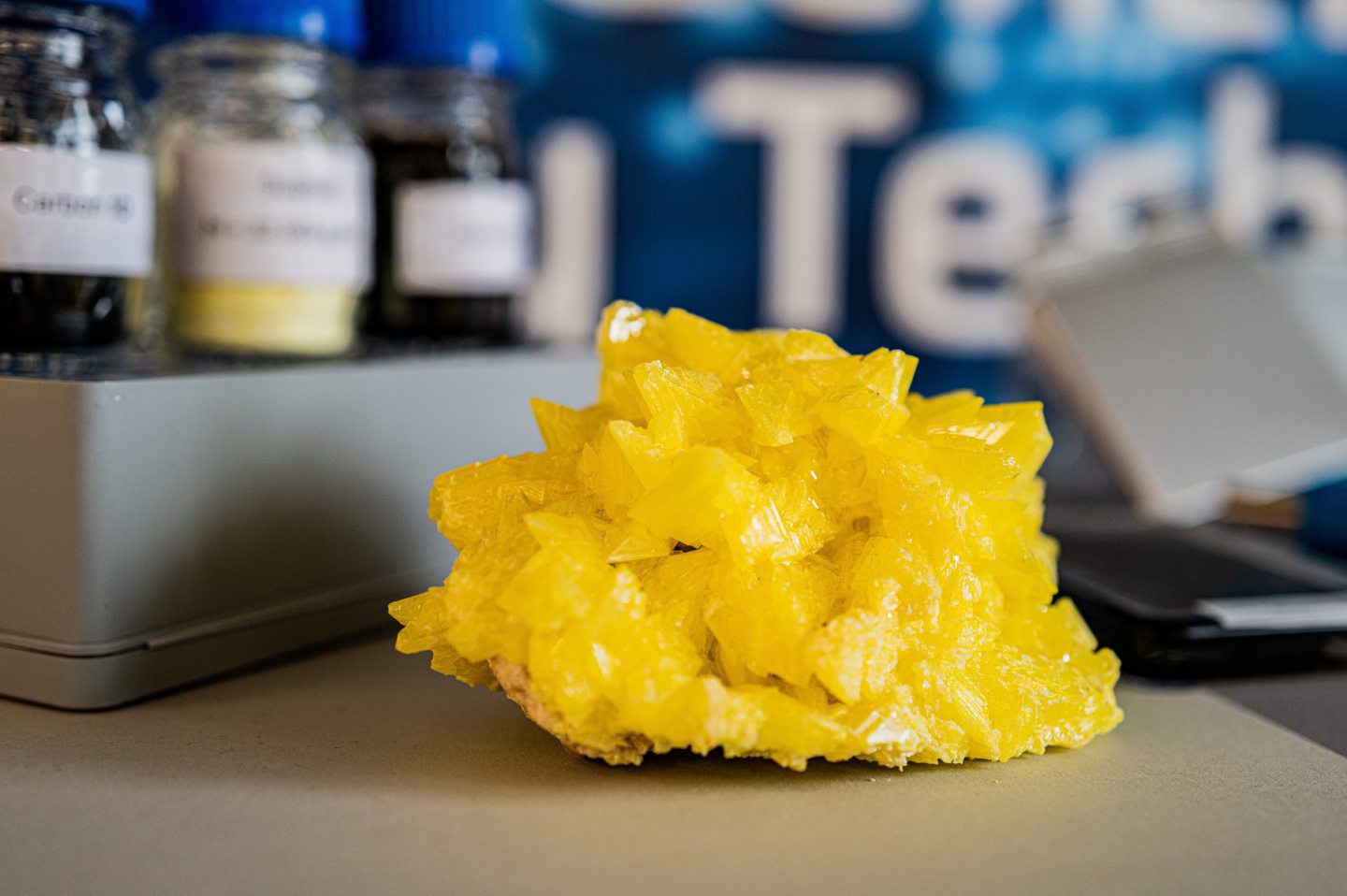 © Supplied by Theion
© Supplied by TheionThis enables sulphur batteries to be three times lighter than lithium-ion alternatives.
However, a key limitation is the cycle life of sulphur batteries. Current sulphur battery technology is unable to reach more than 1,000 cycles, making it economically unviable.
Theion is working to address this issue through its proprietary crystal sulphur structure, which can increase the cycle life of its batteries.
Theion chief executive Dr Ulrich Ehmes said the company is designing its crystal sulphur battery to position Europe as a “leader in sustainable energy storage”.
“There is still a way to go but our technology shall enable CO2-neutral electric flights, extended EV range, and efficient stationary energy storage,” Ehmes said.
Theion said its initial target markets include electric aviation, EVs and battery energy storage systems.
Charging Forward, bringing you the latest in UK and international energy storage news, is kindly sponsored by ABB BESS-as-a-Service.


